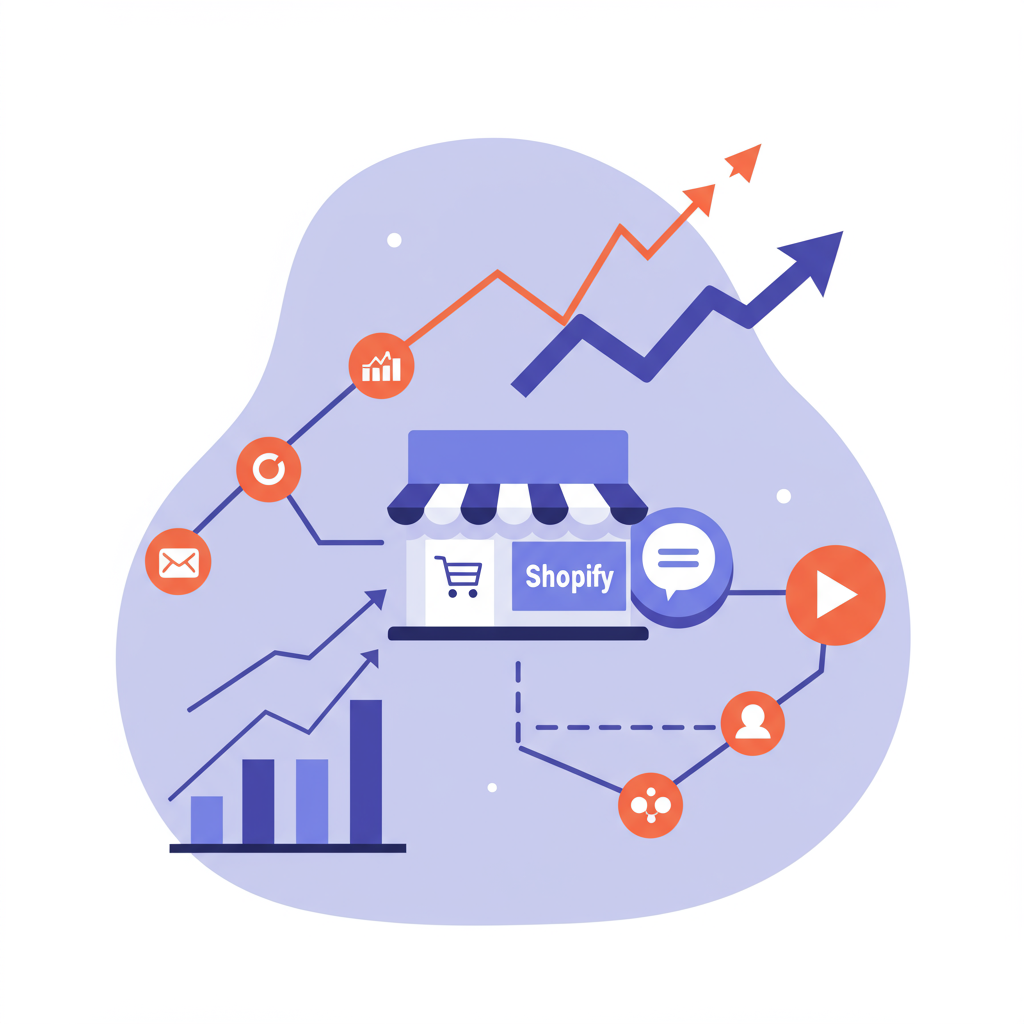Anticipate Customer Needs, Optimize Operations, and Drive Data-Driven Success
As a Shopify merchant, you’re constantly looking for ways to grow your business, enhance customer experience, and stay ahead of the competition. We all are.
But what if you could not just react to customer behavior, but anticipate it? What if you could know what your customers want before they even realize it themselves?
This is where predictive analytics comes into play, transforming how we approach e-commerce and offering a powerful edge.
For years, I’ve seen businesses thrive by leveraging data, but predictive analytics takes it to an entirely new level. It’s about moving beyond historical reporting to future forecasting.
At its core, predictive analytics involves using historical data, statistical algorithms, and machine learning techniques to identify the likelihood of future outcomes based on patterns.
Think about it: instead of guessing what your customers might want, or reacting to a dip in sales, you’re making informed decisions based on robust data-driven predictions.
One of the most powerful applications I’ve found for Shopify stores is predicting Customer Lifetime Value (CLV). This isn’t just a vanity metric; it’s a strategic imperative.
Knowing a customer’s potential long-term value allows me to allocate marketing spend more effectively, focusing my resources on acquiring and retaining the most profitable customers.
I can identify high-value customers early in their journey and tailor retention strategies, ensuring they feel appreciated and continue to shop with me for years to come.
Another critical area where predictive analytics shines is churn prediction. It’s heartbreaking to lose a customer, especially when it could have been prevented.
Predictive models can flag customers who are at risk of leaving – perhaps due to declining engagement or a change in purchase frequency – giving me the chance to intervene with targeted offers or personalized support.
Imagine sending a personalized discount or a helpful follow-up email to a customer just before they decide to shop elsewhere – that’s the power of anticipation in action.
Personalized product recommendations are also a game-changer, and predictive analytics is at their core. We’ve all seen ‘customers who bought this also bought…’ but it goes much deeper.
By analyzing past purchases, browsing history, demographic data, and even similar customer behavior, I can suggest products that are genuinely relevant and appealing to individual shoppers.
This not only enhances the shopping experience by making it feel more curated but also significantly boosts average order value and conversion rates.
Inventory management, a constant headache for many of us, becomes much smoother and more efficient with predictive analytics.
I can accurately forecast demand for specific products, ensuring I have enough stock to meet anticipated sales without tying up too much capital in excess inventory.
No more frustrating stockouts that lead to lost sales and disappointed customers, and no more costly overstocking that eats into my profit margins. Just optimized inventory levels.
Demand forecasting extends beyond individual products to overall sales trends. This is crucial for operational planning.
I can anticipate seasonal spikes, the impact of upcoming promotions, and even external factors like holidays or economic shifts, allowing me to prepare my operations, staffing, and marketing campaigns accordingly.
This proactive approach means I’m always ready, whether it’s for the rush of Black Friday or a sudden surge in interest for a trending product.
Dynamic pricing strategies also benefit immensely from predictive insights. It’s about finding the optimal price point at any given moment.
I can adjust prices in real-time based on factors like current demand, competitor pricing, inventory levels, and even customer willingness to pay, maximizing my revenue and competitiveness.
It’s about finding that sweet spot where profitability meets customer satisfaction, ensuring I’m not leaving money on the table or alienating customers with static pricing.
Optimizing marketing campaigns is another area where I’ve seen tremendous results by applying predictive analytics.
Predictive models help me identify the best channels, messaging, and timing for my ads, ensuring a higher return on investment for every dollar spent.
I can segment my audience with incredible precision, delivering highly relevant content that resonates deeply with their specific needs and preferences.
Even fraud detection, a silent but significant threat to any e-commerce business, can be mitigated using predictive models.
These systems can identify suspicious patterns in transactions, flagging potentially fraudulent orders before they cause financial losses or chargebacks, protecting my business.
So, how do you, as a Shopify merchant, start harnessing this incredible power for your own store?
It begins with your data. Ensure your Shopify store is collecting comprehensive customer, product, and sales data. The cleaner and more complete your data, the better the predictions.
Many Shopify apps and third-party platforms now offer predictive analytics capabilities, making it more accessible than ever for businesses of all sizes.
I recommend starting small, perhaps focusing on one key area like CLV prediction or optimizing product recommendations, and then expanding as you gain confidence and see results.
The benefits are clear: increased sales, improved customer satisfaction, reduced operational costs, and a significant competitive edge in a crowded market.
Of course, there are challenges – ensuring data quality, the initial learning curve, and choosing the right tools can seem daunting.
But in my experience, the investment in time and resources pays off exponentially in the long run, transforming your business from reactive to proactive.
The future of e-commerce is undoubtedly data-driven, and predictive analytics is the engine that powers it forward.
It allows us to move from reacting to anticipating, from guessing to knowing, and from hoping for success to strategically planning for it.
I truly believe that embracing predictive analytics is not just an option, but a necessity for sustainable growth and long-term success in today’s dynamic market.
What are your thoughts on integrating predictive analytics into your Shopify store? I’d love to hear your perspective and experiences.
By leveraging the insights hidden within your data, you can build a more resilient, customer-centric, and ultimately, a more profitable Shopify business.






